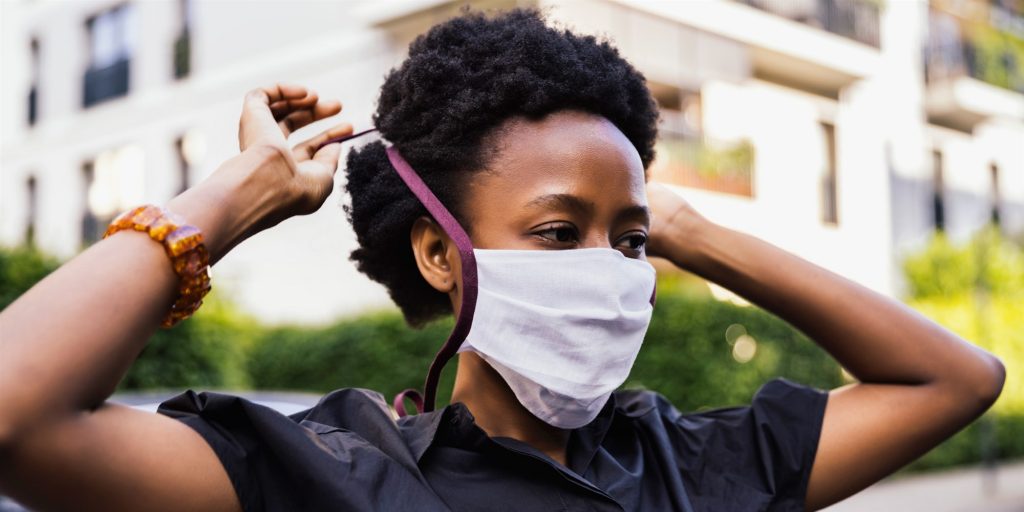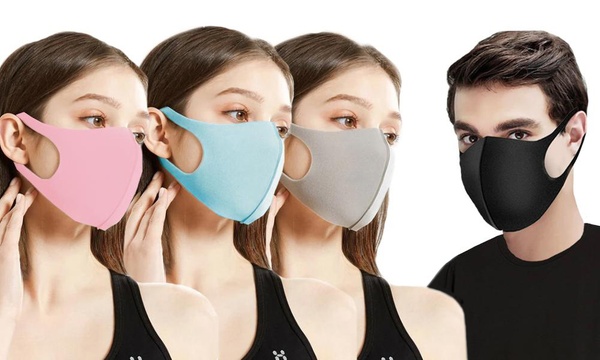ASTM International’s face mask standard is finally out. Approved brands can add its label to their product, greatly simplifying the shopping process.

Nearly a year after the coronavirus outbreak was declared a pandemic, we finally have a standard for everyday face masks. ASTM International, a voluntary standard-setting organization that offers guidance on everything from hand sanitizers to textiles, just released its Standard Specification for Barrier Face Coverings. A first of its kind, the standard answers the broad call we’ve seen from experts seeking an informed set of best practices for manufacturing face masks.
The standard is more specific than current guidelines like those issued by the Centers for Disease Control and Prevention and its recent report about double masking. Once tested and approved for meeting ASTM’s specs, brands will be able to slap a label on their product to that end, informing shoppers that their face mask meets certain requirements — namely, that it “meets ASTM F3502,” part of the actual language you’ll see on the label.
“If you go into a store and buy a mask, you generally have no idea what you’re getting,” said Dan Smith, ASTM’s VP of technical committee operations. “But if you go into a store and purchase a face mask that’s labeled, saying it meets the ASTM standard, you can understand what you’re getting and that you’re getting a certain level of protection.”
Until now, organizations like ASTM, the Food and Drug Administration and the National Institute for Occupational Safety and Health only published standards for face masks used in healthcare settings, like surgical masks and N95 masks, Smith said. Ultimately, the general public will be able to judge just how effective their non-medical single use and reusable masks really are without having to rely on a brand’s word. According to ASTM, its new standards are designed to “avoid the general confusion related to barrier face covering effectiveness” by establishing specific requirements for its design, performance, labeling, user instruction, reporting and classification.
Best face masks: What it takes to get certified
In order for manufacturers and brands to say their face mask meets ASTM’s standard, they have to prove it. Here’s how it works: Brands and mask makers are required to test their face coverings in accredited labs. The tests certify that the masks adhere to ASTM’s guidelines.
Manufacturers also have to complete a conformity assessment indicating that face coverings labelled as ASTM-compliant have met all of the requirements of the standard, including design criteria, performance criteria, test methods, labelling and user information.
Face mask performance and protection
Face masks are evaluated based on two main properties: filtration efficacy and breathability. Each property is tested on two levels.
- Level one performance verifies the minimum requirements to meet ASTM’s standard
- Level two performance signifies a higher result regarding the standards.
Notably, in terms of filtration efficacy, ASTM’s standard questions whether a mask can filter out particles as small as 0.3 microns. The exact percentage of particles the mask can filter out determines its level one or level two designation. Amesh A. Adalja, MD, a senior scholar at the Johns Hopkins Center for Health Security, told us 0.3 microns makes for a “good benchmark” that’s often used to evaluate face coverings and filters (especially HEPA filters, like those experts recommend for air purifiers). He noted that 0.3 microns is smaller than the size of the respiratory droplets that could carry Covid, so ASTM’s standard is “going above and beyond” to ensure masks are protective.
Face mask labels
ASTM sets labeling requirements for certified masks, giving them a “stamp of approval” that people could look for on packaging while shopping, explained Adalja. He compared it to the SPF label that denotes a certain level of protection for sunscreen.
“Not all face masks are equal,” said Adalja. “By creating standards for masks for the general public, people can begin to figure out what they can wear to keep them and those around them the most protected.”
Adalja said the new ASTM label will give shoppers confidence that the mask they’re purchasing has met efficacy requirements to keep them safe, as well as now-required information for the mask user:
- How to properly wear the mask
- Whether it’s intended to be reusable
- And how clean it

Face mask designs
ASTM’s standard details the design requirements for face masks, too — much of this segment of the standard mirrors existing guidelines from the CDC:
- Masks must stay over the mouth and nose
- Masks cannot include vents, valves, or other open pathways
- Masks should fit snugly where the product contacts the wearer’s face to minimize gaps
- Portions of the mask that come in contact with skin must be made of nonirritating and nontoxic materials
- Masks should minimize the flow of air around their perimeter
- Masks must be comfortable enough for individuals to be willing to wear for long periods of time
Face mask durability
Masks are also evaluated based on their potential reuse, testing how well face masks uphold their level of efficacy after getting cleaned the maximum of times specified by manufacturer’s care instructions.
ASTM chose to include this requirement in the standard because “it is known that certain products may shrink, stretch, become distorted, or are otherwise negatively affected in their capabilities for source control and their potential for reducing the inhalation of particulate matter” after being cleaned multiple times, the association notes in its guidance. Since the CDC guides people to regularly wash face masks, ensuring their level of protection does not decrease overtime is especially important.
How ASTM comes up with its standards
Smith said ASTM is made up of over 100 different committees that cover a range of industries. Anyone who wants to join a committee can become a member of one. Committees are composed of different stakeholder groups like varying levels of government officials, researchers, testing labs, manufacturers and academics. To develop a standard, a member of an ASTM committee identifies a need for one. Members of the committee work together to draft a standard, address concerns and make revisions over time. To create the new standards for face masks, the members of the Committee F23 on Personal Protective Clothing and Equipment worked together beginning in July 2020 and edited multiple drafts before they arrived at the final one
ASTM is a consensus standards developing organization: Before standards can be officially published, they’re subject to a consensus requirement both in terms of the percentage of members in a committee who vote on the standard and a percentage of overall ASTM members who vote to affirm the standard. If the standard is approved by the committee, it’s then published. All ASTM standards are volunteer standards, too, meaning it’s up to manufacturers to create products that meet those standards, or they can get pre-existing products tested and certified. But no government agency polices these standards.
ASTM standards for other products
In addition to its new non-medical face mask standard, ASTM has a plethora of other standards that relate to COVID-related products like medical-grade masks, medical gowns and gloves, hand sanitizers, respirators and thermometers — the organization publishes a tome of standards annually covering its latest guidance. Here are a few ASTM-certified products that align with Shopping reader interests, some of which we’ve seen grow quite popular in the last year.

